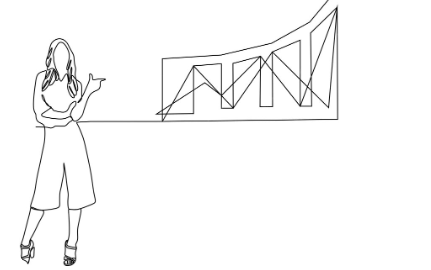“Yeh Kaise Hoga?” – The Common Cry of Every Beginner Trader
Mastering the stock market isn’t about rushing. Learn how building self-efficacy and focusing on a few key trading strategies can boost confidence and long-term success.
You sit in front of your laptop, trading screen open. Charts are dancing. News is flowing. Your heart is racing. And somewhere deep inside, a voice whispers, “Yeh kaise hoga?”
If you’re just starting your trading journey in India, especially in your 30s or 40s, you’ve probably felt overwhelmed. You know making consistent profits is possible—many have done it. But the path feels steep, unpredictable, and exhausting.

Here’s the truth: Mastering the markets is not about speed. It’s about starting small, building confidence slowly, and sticking with it long enough to grow.
That’s where the concept of self-efficacy in trading comes in. It’s a proven psychological tool that can turn your fear into focus—and your confusion into clarity.
🎯 What Is Self-Efficacy—and Why It’s More Powerful Than Self-Esteem
“Self-esteem is how you feel about yourself. Self-efficacy is what you believe you can do in a specific situation.”
Imagine you’re new to driving. You may not think of yourself as a great driver (low self-esteem), but you’re confident you can drive safely in your colony’s quiet streets (high self-efficacy).
In trading, this is gold.
You may not think of yourself as a market expert. But if you know how to trade a specific setup in a bull market—and you’ve practiced it—you’re building self-efficacy.
And once you start winning in those specific zones, your mindset shifts from “I can’t” to “I can under these conditions.”
⛰ Why Mastering the Market Feels Like Climbing a Mountain
Trading can feel like standing at the base of the Himalayas—so much to learn, so much uncertainty. Most beginners make these mistakes:
❌ Trying to master everything at once:
- Options, futures, swing trading, intraday—all in one month.
- End result? Confusion, frustration, and losses.
❌ Believing one big win will solve everything:
- A lucky trade makes them overconfident.
- But one bad day wipes out gains—and confidence.
❌ Ignoring psychology and mindset:
- Focus is only on strategy, not on emotions or discipline.
✅ The better path? Pick one “hill” at a time before trying to summit Everest.
🧠 Start With Just One Strategy in One Market Condition
Think of trading like cricket.
Would Virat Kohli have become a master batsman by trying to learn spin, swing, and bouncers all on Day 1? No. He mastered the basics, gained confidence, and then expanded his range.
Apply the same principle.
🔍 Step-by-Step Plan:
- Pick One Setup
Example: Bullish breakout on a daily chart using price action + RSI confirmation. - Pick One Market Condition
Trade only in bullish markets or stable uptrends initially. - Repeat. Track. Reflect.
Journal each trade. Look for patterns. Don’t try to be perfect—just consistent. - Only Expand When Consistent Success Is Seen.
This builds your self-efficacy. It’s like sharpening one tool really well before buying an entire toolbox.
🛠 Benefits of High Self-Efficacy in Trading
Research in performance psychology shows that people with high self-efficacy:
- ✅ Set more challenging but achievable goals
- ✅ Bounce back faster from losses
- ✅ Stay calmer under pressure
- ✅ Feel more in control, even when the market isn’t
Why this matters in trading:
Markets are stressful. If you panic every time the Nifty dips or a candle spikes, your judgment suffers.
But if you’ve tasted consistent success—even in one small zone—you’ll start trading with conviction, not confusion.
💡 Real-Life Example: Ramesh, the Reluctant Trader from Pune
Ramesh, a 38-year-old IT engineer, started trading during the pandemic. He tried it all—options, intraday, swing trades—and burned through ₹80,000 in 3 months.
Then he shifted his approach.
- He picked just one pattern: RSI + volume breakout on Nifty stocks
- Traded only during bullish trends
- Did only 2 trades per week
In 6 months, he was averaging a 10% monthly return—not by chasing markets, but by mastering one tiny piece of it.
His self-efficacy grew. And so did his courage to explore other strategies—one at a time.
⚙️ How to Build Self-Efficacy as a Trader (Step-by-Step)
1. Start Small, But Stay Consistent
- One strategy
- One condition
- One time slot (e.g., only trade in the first 90 mins of the day)
2. Log Every Trade
- What worked?
- What didn’t?
- What did you feel?
3. Measure Progress, Not Just Profits
- Focus on execution, not only on P&L
- Celebrate consistency and discipline
4. Seek Feedback, Not Just Wins
- Learn from a community or mentor
- Rewatch your trades like cricketers review match footage
🧗♂️ Mindset Shift: Success Is Not Sudden—It’s Stacked
“Don’t aim for ₹1 lakh in a month. Aim for 20 good trades. The money will follow.”
Many traders fail because they want instant growth.
But successful traders grow like compounding interest: slowly, then suddenly.
Build one layer of confidence → Trade that well → Add a new skill → Repeat.
This is the emotional edge most traders ignore. And it’s what separates the few who succeed from the many who burn out.
🔑 Quick Takeaways
- 🎯 Self-efficacy = Belief in your ability to execute a strategy under known conditions
- 🧱 Start small with one strategy, one market condition
- 📈 Success builds confidence, which fuels more success
- ⚠️ Don’t rush into everything—master one thing first
🧘 Confidence in process > confidence in outcomes

2 thoughts on “Mastering the Markets Is Like Climbing a Mountain: Here’s How to Start Small and Win Big”